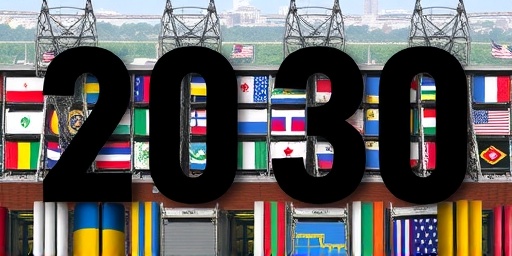In a bittersweet outcome at the COP30 climate summit in Belém, Brazil, world leaders forged a landmark Climate deal that triples global adaptation funding to $100 billion annually, offering vital support to nations on the frontlines of climate change. However, the talks faltered on establishing a clear roadmap for phasing out fossil fuels, leaving environmental advocates frustrated after weeks of heated negotiations.
Tripling Adaptation Funding: Lifeline for Climate-Vulnerable Countries
The cornerstone of the new Climate deal at COP30 is the unprecedented commitment to triple adaptation funding, escalating it from the previous $33 billion target to $100 billion per year by 2030. This boost aims to help developing countries build resilience against rising sea levels, extreme weather, and agricultural disruptions. Delegates from small island states and African nations, who have long clamored for such support, hailed the agreement as a game-changer.
“This is not just money; it’s survival,” declared Mia Mottley, Prime Minister of Barbados, during the closing plenary. Her words echoed the sentiments of over 100 vulnerable nations that pushed for the increase, citing the disproportionate burden they face despite contributing minimally to global emissions. The funding will prioritize projects like coastal defenses in the Pacific, drought-resistant farming in sub-Saharan Africa, and early warning systems for hurricanes in the Caribbean.
According to a United Nations report released midway through the climate summit, adaptation needs could reach $400 billion annually by 2030 without intervention. The COP30 pledge addresses about a quarter of that gap, funded through a mix of public finance from wealthy nations, private sector investments, and innovative mechanisms like carbon levies on international shipping. Experts estimate that this influx could prevent economic losses equivalent to 2-3% of GDP in low-income countries annually.
Yet, implementation remains a sticking point. The deal includes a new accountability framework with annual reporting requirements, but critics worry about enforcement. “Promises are plentiful, but delivery has been spotty,” noted a spokesperson for the Green Climate Fund, which will oversee much of the distribution. Historical data shows that only 20% of pledged climate finance materialized on time in previous cycles, fueling skepticism among activists protesting outside the venue.
Fossil Fuel Phase-Out Debates: Oil-Producing Giants Hold Firm
While adaptation funding saw progress, the COP30 climate summit exposed deep divisions over fossil fuels, with no consensus reached on a binding roadmap for their phase-out. Major producers like Saudi Arabia, Russia, and the United States resisted calls for a timeline, arguing that such measures would cripple economies dependent on oil and gas exports. The absence of agreement marks a continuation of the contentious legacy from COP28, where a vague pledge to “transition away” from fossil fuels was made but never operationalized.
Negotiations grew tense in the final days, with closed-door sessions extending into the early hours. A draft text proposing a 2040 phase-out deadline was watered down after interventions from the fossil fuel lobby. “We cannot sacrifice jobs and energy security for unproven green technologies,” stated Saudi Energy Minister Prince Abdulaziz bin Salman, representing OPEC+ nations that control 40% of global oil production.
Environmental groups, including Greenpeace and the Sierra Club, decried the outcome as a “missed opportunity.” Data from the International Energy Agency underscores the urgency: fossil fuels still account for 80% of global energy use, driving 75% of greenhouse gas emissions. Without a phase-out plan, the world risks overshooting the 1.5°C Paris Agreement threshold, potentially leading to irreversible tipping points like the collapse of the Amazon rainforest—ironically, the backdrop for COP30 in Brazil.
Protests inside the venue highlighted the human cost, with Indigenous leaders from the Amazon blocking access to demand protections against oil drilling on their lands. One activist, from the Yanomami tribe, told reporters, “Our rivers are poisoned by fossil fuel greed; COP30 must end this now.” Despite the impasse, side deals emerged, including a voluntary coalition of 50 countries pledging to end coal subsidies by 2035, a step forward but far short of comprehensive fossil fuel reform.
Key Players and Voices Shaping the COP30 Outcome
The climate summit drew over 25,000 attendees, including heads of state, scientists, and civil society representatives, making it one of the largest gatherings in UN history. Brazilian President Luiz Inácio Lula da Silva, as host, played a pivotal role in bridging divides, leveraging his country’s biodiversity credentials to push for nature-based solutions. “We are not just talking climate; we are securing our shared future,” Lula emphasized in his opening address, which set a tone of urgency amid wildfires raging across the Amazon.
UN Secretary-General António Guterres praised the adaptation funding win but lambasted the fossil fuel stalemate. “We are on a highway to climate hell with our foot on the accelerator—fossil fuels are the fuel,” he warned, echoing his famous 2022 speech. On the funding front, European Union Climate Commissioner Frans Timmermans announced a €50 billion contribution from the bloc, conditional on transparency measures.
Developing nations, represented by the G77+China bloc, flexed their growing influence. India, often criticized for coal reliance, secured concessions allowing flexibility in fossil fuel transitions for emerging economies. Meanwhile, youth activists like Greta Thunberg returned to the fray, staging a sit-in that amplified calls for fossil fuel accountability. Their efforts spotlighted statistics from the IPCC: even with current pledges, global temperatures could rise 2.5-3°C by 2100, exacerbating inequality.
Corporate presence was notable, with tech giants like Google committing $1 billion to adaptation tech, such as AI-driven flood predictions. However, oil majors like ExxonMobil faced backlash for greenwashing, as their lobbyists were seen influencing fossil fuel talks. A leaked memo revealed internal debates within the industry, with some executives privately acknowledging the need for diversification into renewables.
Beyond Adaptation: Other COP30 Wins and Shortfalls
The Climate deal at COP30 extends beyond adaptation funding, incorporating advances in loss and damage finance and biodiversity integration. A new fund for irreversible climate impacts, building on COP27’s establishment, was capitalized at $20 billion initially, targeting disaster recovery in places like Pakistan, which suffered $30 billion in floods last year. Additionally, the summit adopted a framework for protecting 30% of oceans and lands by 2030, aligning with the Kunming-Montreal Global Biodiversity Framework.
On fossil fuels, while the roadmap eluded negotiators, progress was made in methane emissions—a potent greenhouse gas from oil and gas operations. Over 120 countries endorsed a global methane pledge, aiming for a 30% reduction by 2030, potentially averting 0.2°C of warming. This includes monitoring tech shared with producers, addressing the fact that methane leaks contribute 25-30% of human-caused warming since the Industrial Revolution.
Shortfalls were evident in gender and equity provisions. Women’s groups noted that only 40% of adaptation projects in the deal explicitly address gender disparities, despite women comprising 70% of the poor in climate-hit regions. Labor unions raised concerns over just transitions, with the agreement’s vague language on worker retraining failing to satisfy demands for $50 billion in support for fossil fuel-dependent communities.
Health impacts gained traction, with the World Health Organization linking climate change to 250,000 additional deaths yearly by 2030. COP30’s inclusion of a health annex in the climate deal commits to integrating climate resilience into global health strategies, a nod to pandemics exacerbated by environmental shifts.
Pathways Forward: Implications and Next Steps Post-COP30
As delegates depart Belém, the COP30 climate deal’s legacy hinges on execution. The tripling of adaptation funding could catalyze $500 billion in leveraged investments by 2040, per World Bank projections, bolstering food security for 500 million people. Yet, the fossil fuels impasse underscores the need for bolder action; without it, net-zero goals by 2050 remain aspirational, with emissions projected to peak only in 2025 before a sluggish decline.
Looking ahead, the 2025 COP31 in Australia will revisit fossil fuel commitments, potentially under new U.S. leadership if policy shifts occur. Civil society plans intensified campaigns, including divestment drives targeting $4 trillion in fossil fuel assets. Innovations like green hydrogen and carbon capture, piloted at COP30, offer hope, but scaling requires policy certainty.
For vulnerable nations, the adaptation windfall means tangible projects: mangrove restoration in Bangladesh to shield 10 million from cyclones, or solar microgrids in Kenya serving 5 million off-grid households. Globally, the deal reinforces the Paris Agreement’s ratchet mechanism, with countries urged to submit enhanced Nationally Determined Contributions by 2025.
Ultimately, COP30 signals incremental progress in a marathon against climate catastrophe. As Guterres put it, “The era of denial is over; now is the time for delivery.” Stakeholders must bridge the fossil fuel gap to avert the worst, ensuring the climate summit’s promises translate into a livable planet for future generations.









